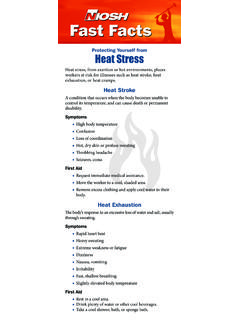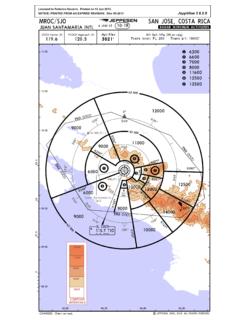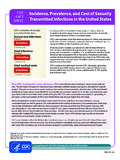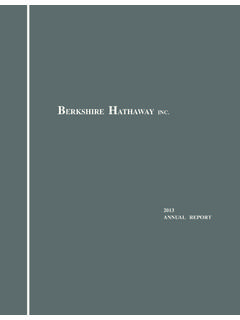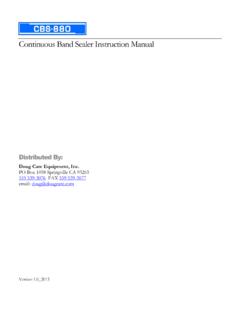Transcription of ANTIBIOTIC RESISTANCE THREATS - Centers for …
1 ANTIBIOTIC RESISTANCE THREATS in the United States, 2013 TABLE OF CONTENTSF oreword ..5 Executive Summary ..6 Section 1: The Threat of ANTIBIOTIC RESISTANCE ..11 Introduction ..11 National Summary Data ..13 Cycle of RESISTANCE Infographics ..14 Minimum Estimates of Morbidity and Mortality from ANTIBIOTIC -Resistant Infections ..15 Limitations of Estimating the Burden of Disease Associated with ANTIBIOTIC -Resistant Bacteria ..18 Assessment of Domestic ANTIBIOTIC -Resistant THREATS ..20 Running Out of Drugs to Treat Serious Gram-Negative Infections ..22 People at Especially High Risk ..24 ANTIBIOTIC Safety ..25 Gaps in Knowledge of ANTIBIOTIC RESISTANCE .
2 27 Developing RESISTANCE : Timeline of Key ANTIBIOTIC RESISTANCE Events ..28 Section 2: Fighting Back Against ANTIBIOTIC RESISTANCE ..31 Four Core Actions to Prevent ANTIBIOTIC RESISTANCE ..311 . Preventing Infections, Preventing the Spread of RESISTANCE ..32 CDC s Work to Prevent Infections and ANTIBIOTIC RESISTANCE in Healthcare Settings ..32 CDC s Work to Prevent ANTIBIOTIC RESISTANCE in the Community ..34 CDC s Work to Prevent ANTIBIOTIC RESISTANCE in Food ..362 . Tracking RESISTANCE Patterns ..393 . ANTIBIOTIC Stewardship: Improving Prescribing, Improving Use ..414 . Developing New Antibiotics and Diagnostic Tests ..44 Section 3: Current ANTIBIOTIC RESISTANCE THREATS in the United States, by Microorganism.
3 49 Microorganisms with a Threat Level of Urgent ..50 Clostridium difficile ..51 Carbapenem-resistant Enterobacteriaceae ..53 Drug-resistant Neisseria gonorrhoeae ..55 Microorganisms with a Threat Level of Serious ..58 Multidrug-resistant Acinetobacter ..59 Drug-resistant Campylobacter ..61 Fluconazole-resistant Candida (a fungus) ..63 Extended spectrum -lactamase producing Enterobacteriaceae (ESBLs) ..65 Vancomycin-resistant Enterococcus (VRE) ..67 Multidrug-resistant Pseudomonas aeruginosa ..69 Drug-resistant non-typhoidal Salmonella ..71 Drug-resistant Salmonella Typhi ..73 Drug-resistant Shigella ..75 Methicillin-resistant Staphylococcus aureus (MRSA).
4 77 Drug-resistant Streptococcus pneumoniae ..79 Drug-resistant tuberculosis ..81 Microorganisms with a Threat Level of Concerning ..84 Vancomycin-resistant Staphylococcus aureus (VRSA) ..85 Erythromycin-resistant Group A Streptococcus ..87 Clindamycin-resistant Group B Streptococcus ..89 Technical Appendix ..93 Glossary ..107 Acknowledgements ..1124 ACINETOBACTER5 FOREWORDA ntimicrobial RESISTANCE is one of our most serious health THREATS . Infections from resistant bacteria are now too common, and some pathogens have even become resistant to multiple types or classes of antibiotics (antimicrobials used to treat bacterial infections).
5 The loss of effective antibiotics will undermine our ability to fight infectious diseases and manage the infectious complications common in vulnerable patients undergoing chemotherapy for cancer, dialysis for renal failure, and surgery, especially organ transplantation, for which the ability to treat secondary infections is crucial . When first-line and then second-line ANTIBIOTIC treatment options are limited by RESISTANCE or are unavailable, healthcare providers are forced to use antibiotics that may be more toxic to the patient and frequently more expensive and less effective . Even when alternative treatments exist, research has shown that patients with resistant infections are often much more likely to die, and survivors have significantly longer hospital stays, delayed recuperation, and long-term disability.
6 Efforts to prevent such THREATS build on the foundation of proven public health strategies: immunization, infection control, protecting the food supply, ANTIBIOTIC stewardship, and reducing person-to-person spread through screening, treatment and education .Dr . Tom Frieden, MD, MPHD irector, U .S . Centers for Disease Control and PreventionMeeting the Challenges of Drug-Resistant Diseases in Developing CountriesCommittee on Foreign Affairs Subcommittee on Africa, Global Health, Human Rights, and International OrganizationsUnited States House of RepresentativesApril 23, 20136 ANTIBIOTIC RESISTANCE THREATS IN THE UNITED STATES, 2013 Executive SummaryAntibiotic RESISTANCE THREATS in the United States, 2013 is a snapshot of the complex problem of ANTIBIOTIC RESISTANCE today and the potentially catastrophic consequences of inaction.
7 The overriding purpose of this report is to increase awareness of the threat that ANTIBIOTIC RESISTANCE poses and to encourage immediate action to address the threat . This document can serve as a reference for anyone looking for information about ANTIBIOTIC RESISTANCE . It is specifically designed to be accessible to many audiences . For more technical information, references and links are provided .This report covers bacteria causing severe human infections and the antibiotics used to treat those infections . In addition, Candida, a fungus that commonly causes serious illness, especially among hospital patients, is included because it, too, is showing increasing RESISTANCE to the drugs used for treatment.
8 When discussing the pathogens included in this report, Candida will be included when referencing bacteria for simplicity . Also, infections caused by the bacteria Clostridium difficile (C. difficile) are also included in this report . Although C. difficile infections are not yet significantly resistant to the drugs used to treat them, most are directly related to ANTIBIOTIC use and thousands of Americans are affected each year . Drug RESISTANCE related to viruses such as HIV and influenza is not included, nor is drug RESISTANCE among parasites such as those that cause malaria . These are important problems but are beyond the scope of this report.
9 The report consists of multiple one or two page summaries of cross-cutting and bacteria- specific ANTIBIOTIC RESISTANCE topics . The first section provides context and an overview of ANTIBIOTIC RESISTANCE in the United States . In addition to giving a national assessment of the most dangerous ANTIBIOTIC RESISTANCE THREATS , it summarizes what is known about the burden of illness, level of concern, and antibiotics left to defend against these infections . This first section also includes some basic background information, such as fact sheets about ANTIBIOTIC safety and the harmful impact that RESISTANCE can have on high-risk groups, including those with chronic illnesses such as cancer.
10 CDC estimates that in the United States, more than two million people are sickened every year with ANTIBIOTIC -resistant infections, with at least 23,000 dying as a result . The estimates are based on conservative assumptions and are likely minimum estimates . They are the best approximations that can be derived from currently available data .Regarding level of concern, CDC has for the first time prioritized bacteria in this report into one of three categories: urgent, serious, and concerning . 7 Urgent THREATS Clostridium difficile Carbapenem-resistant Enterobacteriaceae (CRE) Drug-resistant Neisseria gonorrhoeae Serious THREATS Multidrug-resistant Acinetobacter Drug-resistant Campylobacter Fluconazole-resistant Candida (a fungus) Extended spectrum -lactamase producing Enterobacteriaceae (ESBLs) Vancomycin-resistant Enterococcus (VRE) Multidrug-resistant Pseudomonas aeruginosa Drug-resistant Non-typhoidal Salmonella Drug-resistant Salmonella Typhi Drug-resistant Shigella Methicillin-resistant Staphylococcus aureus (MRSA)









